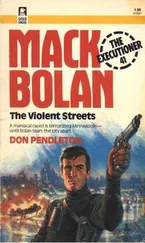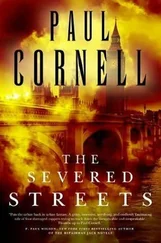But twenty years has transformed the city and Howard Corbin both, pushing Corbin to the career criminals unit at the other end of the sixth floor: For the last several years, in fact, Corbin has been fighting a rear-guard action against change itself, trying to prove to the chain of command that age and a diabetic condition have done nothing to slow him down. It is a noble fight, but in some ways painful to watch. And in the mind of any younger detective, Corbin has become a living, breathing reminder of the price you can be made to pay for giving too much of your life to a police department. He still shows up early every morning, still fills out his run sheets, still works a case or two, but the truth is that career criminals is a paper unit with half an office and a handful of men. Corbin knows it, too, and he doesn’t work a day there without wearing his heart on his sleeve. For him, the homicide unit will always be the promised land, and the Latonya Wallace case is his chance for an exodus.
A month into the case, Corbin asked Colonel Lanham if he could look at the case file, and the colonel couldn’t come up with any reason to deny the request, though he and everyone else could plainly see the motive behind it. But so what? Lanham reasoned that it couldn’t hurt to have an experienced detective review the file. You never knew what a fresh mind might notice. And if, by some chance. Corbin actually managed to solve the case, then maybe he had every right to come back to the other end of the hall.
To Pellegrini’s dismay, when the request was approved, Corbin immediately moved into the annex office and appropriated the Latonya Wallace case file. A blizzard of follow-up reports came on the heels of Corbin’s arrival as he documented his daily effort in lengthy, typewritten reports about whatever investigative leads he happened to be pursuing. For Pellegrini, the case file soon became unmanageable through sheer bulk, much of it unnecessary, to his mind. More important to Pellegrini, Corbin’s involvement was exactly the opposite of the approach he had argued in his memo to the captain. He had urged a careful, thorough review of the existing evidence, a review to be conducted by the primary and secondary detectives who were most familiar with the case. Instead, the file seemed once again to have become community territory.
And now Corbin will serve as Pellegrini’s proxy in the pursuit of Kevin Lawrence, or at least for as long as it takes to confirm that the suspect is viable. “If this guy looks good,” Landsman assures the others in his squad, “we’re definitely going to give Tom a call at home.”
But the next day, no one thinks about calling Pellegrini when the detectives check with the principal at Eutaw-Marshburn Elementary and are told that Kevin Robert Lawrence was enrolled there from 1971 to 1978. Nor do they think of calling when the more comprehensive computer search produces nothing remotely resembling a criminal record. Nor do they think of bothering him when the Wallace family says that they know nothing of this Kevin Lawrence and cannot remember his having anything to do with the victim.
Eight days after a police computer took his name in vain, Kevin Lawrence is brought down to the homicide unit, where he tells detectives that he knows nothing about any girl named Latonya Wallace. He does, however, remember a book about black American heroes with the title of Pioneers and Patriots. Shown the text itself, he can even recall the school report he prepared long ago using that same book, which he had borrowed from the Eutaw-Marshburn school library. The paper was on great black Americans and, as the young man recalled, it earned him an A. But that, he says, was more than ten years ago. Why are they even asking about it?
The investigation that exonerates Kevin Lawrence is still wrapping up when Pellegrini returns to duty. But by luck or mercy or both, the primary investigator is allowed to watch from the periphery as other detectives slam into a wall. He is, in a very real sense, spared the anguish of seeing a precious piece of physical evidence reduced to fantastic coincidence-a fingerprint that sat undisturbed on a book for more than a decade, waiting for a million-dollar computer to give it life enough to taunt a few homicide detectives for a week and a half.
Instead of riding the print hit into another psychological trough, Pellegrini manages to come back to work a little stronger. The cough is still there, but the exhaustion, less so. Within a day or two of his return, the manila folder that contains the information gleaned on the Fish Man is back on his desk in the annex office. And at the same time that the detectives are busy returning a blissfully unaware Kevin Lawrence to freedom and anonymity, Pellegrini is back up on Whitelock Street, interviewing other merchants about the habits of the man who still remains his most promising suspect.
On the same day, in fact, that Lawrence is boring other detectives with his grade school adventures, Pellegrini grabs a set of Cavalier keys and a handful of plastic evidence bags and makes his way inside the burned-out Whitelock Street store where the Fish Man had made a living until perhaps a week before the murder. The detective had been through the derelict property several times before, looking for anything to indicate that the little girl-alive or dead-had ever been inside the place, but to his frustration, the building had always seemed nothing more than a blackened shell. Neighboring merchants had in fact told him that the Fish Man had cleaned most everything out in the day or two before the discovery of the little girl’s body.
Still, Pellegrini takes another look around before getting down to the business at hand. Satisfied that nothing in the wreckage has gone unnoticed, he sets about prying up blackened soot and debris from several locations. In places, the stuff is thick and oily and mixed, perhaps, with the tar from portions of the collapsed roof.
The thought had occurred to Pellegrini while he was out on leave and it was, he had to concede, something of a long shot, considering how little the trace lab had so far been able to learn about the black smudges on the dead girl’s pants. But what the hell, he tells himself, if they have something specific with which to compare those smudges, Van Gelder’s people may be able to make something happen.
Every now and then a long shot does come in, the detective muses, a little hopeful. But even if the samples from the store never amount to anything, they are important to Pellegrini for another reason: It is his idea. It is his own thinking that the stuff on the little girl’s pants may match the soot from the Fish Man’s store. Not Landsman’s. Not Edgerton’s. Not Corbin’s.
In all probability, Pellegrini tells himself, this will be another dead end in the maze, another single-page report in the folder. But even so, it would be his dead end, his report.
Pellegrini is the primary and he is thinking like the primary. He drives back from Reservoir Hill with the soot samples beside him on the passenger seat, feeling, for the first time in weeks, like a detective.
WEDNESDAY, JUNE 22
Clayvon Jones lies face down in the courtyard of the housing project, his torso covering the loaded 9mm Colt he never had a chance to use. The gun is cocked, with a live round in the chamber. Someone was looking for Clayvon and Clayvon was looking for someone, and Clayvon got rained on first.
Dave Brown rolls the body and Clayvon stares up at him, white foam at the edges of his mouth.
“Damn,” says Dave Brown. “That’s a nice gun.”
“Hey, that is pretty,” says Eddie Brown. “What is that? A forty-five?”
“No, I think it’s one of those Colt replicas. They’re making nine-millimeters with that classic forty-five mold.”
Читать дальше












